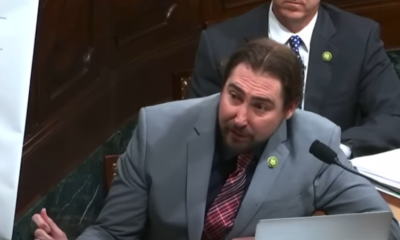Business
Trump’s ‘Drill, Baby, Drill’ Pledge: Little Impact Expected, Especially in Texas

Former President Donald Trump has expressed a commitment to ramping up U.S. energy production from Day One of his potential next administration, with a rallying cry of “drill, baby, drill.” His platform emphasizes making the U.S. “the dominant energy producer in the world, by far,” a goal that has already seen substantial progress, particularly driven by Texas.
This year, the Texas Oil & Gas Association reported that Texas accounted for 42% of the nation’s oil production. In 2022 alone, Texas reached record highs with nearly 2 billion barrels of oil and 12 trillion cubic feet of natural gas extracted.
Nationally, oil production across the U.S. surged to an average of 12.9 million barrels per day, surpassing the 2019 record of 12.3 million barrels. The federal Energy Information Administration predicts further growth, projecting an average production of 13.2 million barrels per day this year, with an anticipated peak of 13.7 million barrels daily by 2025.
Despite global competitors like Russia, which produced approximately 9 million barrels a day as of June, the U.S. has consolidated its leadership in the energy sector since overtaking Saudi Arabia and Russia in production in 2018. Analysts forecast that Texas is set to continue its significant oil contributions in the coming years, which are closely tied to industry demand dynamics rather than presidential policies.
While Trump’s administration is likely to promote less regulation, the current Biden administration has taken a different approach, implementing policies aimed at tackling climate change. This includes rules to reduce methane emissions and restrictions on drilling in certain federal lands. Although such changes have strained relationships with energy producers, their overall effect on production levels remains debated.
Much of Texas’s oil production is concentrated in the Permian Basin, a massive area hosting major players like Chevron and ExxonMobil. The state’s oil can be traced back to both state and private land ownership, which contrasts with New Mexico, where federal land restrictions apply more heavily.
Current data indicates that Texas’s production outpaces the combined output of the nation’s other top-producing states. In 2023, drillers in Texas extracted 2 billion barrels, while states like Pennsylvania, New Mexico, Oklahoma, and North Dakota together produced approximately 1.8 billion barrels.
The Texas oil industry has not shown signs of slowing down. Regulatory bodies have approved around 4,500 new drilling permits this year, about 70% of last year’s total. Companies in Texas face a relatively streamlined process, with no federal limits on permitting.
Technological advancements in fracking and horizontal drilling have catalyzed Texas’s latest oil boom, allowing producers to access larger oil reserves more efficiently. Demand for energy is consistently rising, fueled by global markets and increasing energy needs driven by sectors like artificial intelligence.
However, despite Trump’s rallying cry for increased drilling, experts caution that demand and supply—not politics—ultimately govern production levels. As James Coleman, a law professor, noted, Trump’s message is more focused on energizing his political base than on pragmatic energy policy.
While drilling promises may resonate positively with constituents seeking job growth and economic stability, achieving these goals complicates the relationship between consumer interests and oil profitability. Operators are navigating issues like excess natural gas production, complicating profit models; oil prices remain favorable, yet natural gas prices have sunk to alarming lows in certain regions.
Long-term success for energy companies appears to hinge on optimizing technology and workforce investment rather than expanding drilling efforts blindly. The evolving dynamics of demand and production reflect a market where adaptability is key, challenging simplistic narratives around energy policy.
The Trump campaign did not provide comments on these insights from industry experts. Nonetheless, the continual evolution of energy demands, along with shifts in regulatory landscapes, continues to shape the outlook for U.S. energy production.


















